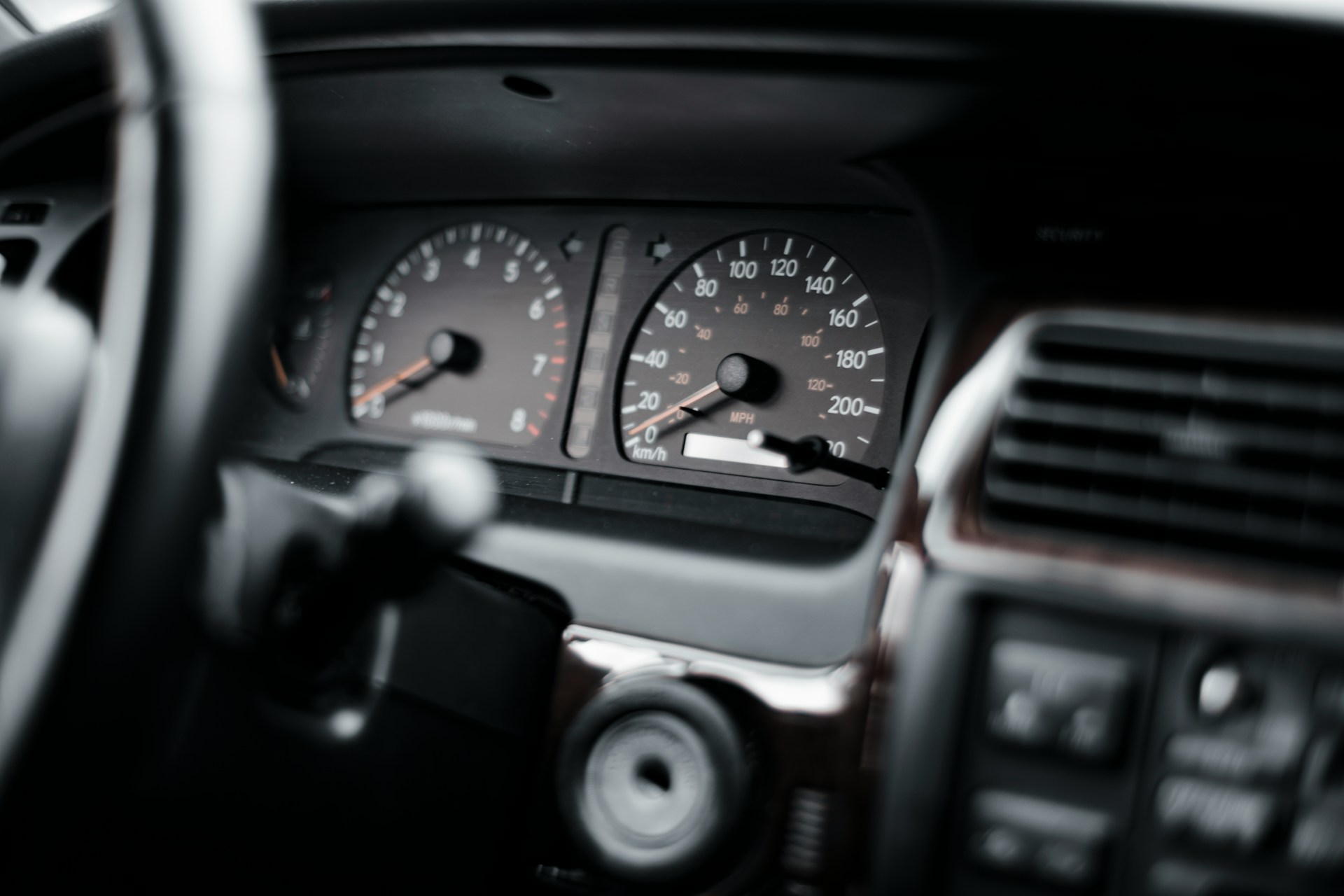Contents
Mileage becomes a vital factor for those buying a used car. Generally, the indicator under 10,000-12,000 miles per year signals good mileage for a used car. However, many drivers mistakenly believe that this factor automatically equals better value and more costs. In reality, how the car was maintained matters just as much. Check the car’s full history to choose a well-maintained vehicle and respond to all potential challenges.
What Does Mileage Mean on a Car?
Mileage is a used car’s total distance. This quality can indicate wear and tear. However, in addition to this, mileage is just one factor that determines a car’s condition. This feature is generally desirable when purchasing a used car. Nevertheless, maintenance history and driving conditions should also be taken into account. Explore these aspects to gain a deeper picture of the car’s true condition and needs.
Average Mileage Expectations by Car Type

Different types of cars accumulate mileage at varying rates. Understanding these patterns helps determine whether the mileage on a particular car is truly low for its class. Many industry experts agree that the following guidelines apply when finding a reliable used vehicle:
· Economy Cars: Typically see higher annual mileage (15,000+ miles/year); critical wear and tear by 150,000 miles.
· Luxury Cars: Require much money for expensive repairs after 100,000 miles.
· SUVs and Trucks: Built for durability and high mileage; many reach 200,000+ miles and long years of service.
· Sports Cars: Driven less but often driven harder, commanding premium prices.
· Hybrid/Electric Vehicles: Battery degradation is key, making low mileage important for older models.
The Role of a Vehicle’s Age vs. Its Mileage
Both age and mileage determine a used car’s condition, value, and accompanying costs. Sometimes, a used car with low mileage but without proper service isn’t better than a newer car with average mileage. Time causes deterioration even without extensive driving. Rubber parts dry out, fluids break down, and electronics can fail regardless of miles. This factor is often stored in the vehicle’s information box along with other vital details:
| Age Range (Years) | Low Mileage | Average Mileage | High Mileage |
| 0-3 | Under 36,000 | 36,000-45,000 | Over 45,000 |
| 4-7 | Under 84,000 | 84,000-105,000 | Over 105,000 |
| 8-11 | Under 132,000 | 132,000-165,000 | Over 165,000 |
| 12+ | Under 150,000 | 150,000-180,000 | Over 180,000 |
The Hidden Risks of Buying a Low-Mileage Car
Fuel System Issues Due to Long-Term Storage
If used cars remain stationary, their fuel systems suffer. Gasoline deteriorates; ethanol attracts moisture. After that, corrosion inevitably emerges. These problems can result in expensive repairs. Always check whether the product has been properly maintained.
Electrical and Battery Problems in Low-Mileage Cars

Compared to high-mileage cars, vehicles with low mileage frequently face electrical problems. Battery systems discharge; electronic components are damaged. Modern cars need consistent use to keep the circuits working properly.
Finding these electrical problems can be challenging. Unnecessary repair costs arise, respectively. What started as a seemingly good purchase can quickly turn into a bad car situation. Consider having a specialist inspect the electrical systems before making your investment.
Rust and Corrosion Risks in Stored Vehicles
Some low-mileage cars show more extensive rust than well-maintained high-mileage cars. When vehicles sit in humid environments, moisture penetrates seams and crevices. Without regular driving to flex seals, water infiltration accelerates. Brake rotors and other metal components develop rust that can progress to structural problems. Always check underneath for corrosion that might compromise safety and cause costs. This is especially true for a band car that might have been stored improperly.
Is Low Mileage Always Worth the Higher Price?
Why Low-Mileage Cars Often Have Inflated Prices
Dealers typically charge premium prices for reliable vehicles. This money inflation isn’t always justified when considering all factors:
· Marketing Advantage: Such quality provides an easy selling point for marking up prices.
· Perceived Value: Buyers often pay more money without investigating the market value and other condition factors.
· Supply and Demand: Truly low-mileage examples of popular cars are relatively rare.
· Future Resale Potential: Cars will still have relatively low mileage for the next owner.
· Less Obvious Problems: Without visible damage, it’s harder to negotiate cost reductions.
Insurance Considerations for Low-Mileage Cars
Insurance companies generally view low-mileage used cars more favorably, potentially offering reduced premiums. Many use telematics programs that track driving habits, providing discounts for limited use. However, the higher purchase price means you’ll need more comprehensive coverage. Specialty insurance may be better for extremely low-mileage vehicles, offering agreed-value coverage rather than standard depreciation models. Experts agree this is often a good option for collectors.
Best and Worst Brands for Low-Mileage Used Cars

Not all vehicle brands age equally at low mileage. Some handle periods of disuse better than others, while some develop problems when not driven regularly. Consider some tips to make a good deal and ensure trouble-free ownership after your investment. A piece of advice: always research model-specific problems before purchasing, especially for high-mileage autos:
| Brand | Reliability | Common Problems | Value Retention |
| Toyota | Excellent | Few problems, even when stored | High |
| Honda | Very Good | Electronic systems may need updates | Good |
| Lexus | Excellent | Expensive dealer-only fixes when problems arise | Very High |
| Mercedes | Fair | Complex systems deteriorate | Fair |
| BMW | Poor | Rubber components and electronics tend to fail | Poor |
How to Maintain a Low-Mileage Car to Avoid Common Issues
Owning a low-mileage car requires different maintenance strategies. Regular oil changes remain essential even when driving infrequently, as oil breaks down eventually. Battery maintenance becomes crucial—consider a trickle charger for cars driven less than weekly. Check tire pressure frequently, as flat-spotting occurs while parked. Move the car regularly to prevent brake rotor rust. Maintenance based on calendar time rather than mileage is particularly important for keeping such a car in optimal condition. These practices will help ensure the longevity of your car and keep it working reliably.
Driving Habits That Prevent Mechanical Issues
How you drive your car matters as much as regular maintenance. Adopt these practices to prevent typical problems and keep the car’s value:
· Complete Warm-Up: Allow the engine to reach operating temperature before demanding performance.
· Regular Highway Drives: Plan monthly highway drives to clear carbon deposits.
· Varied RPM Usage: Occasionally run through the full RPM range to prevent carbon buildup.
· Brake Variation: Use different braking intensities to prevent repairs and rotor warping.
· Full Tank Practices: Keep the fuel tank relatively full when storing to prevent moisture.
Summary
The perception that low mileage automatically equals a better used car isn’t always true. While fewer miles generally means less mechanical damage, it’s just one factor determining a car’s condition. Maintenance history and driving patterns all play crucial roles in the overall value. A well-maintained high-mileage car might present fewer problems than a low-mileage car that’s sat unused for extended periods. This is a piece of wisdom that many veteran car owners agree with.When purchasing a used car, look beyond the odometer. Request maintenance records, use a VIN decoder, consider the condition of restored cars if applicable, and get a professional inspection before buying. The best value often lies in finding a responsibly owned vehicle with documented care. This approach represents a safe and smart investment strategy.
FAQ
Is Low Mileage Suspicious?
Extremely low mileage can sometimes be suspicious in older high-mileage cars. You can understand the reading using a VIN decoder and maintenance records. Odometer fraud still occurs, especially when buying a car at auction. Continue your analysis if wear and tear patterns and repairs documentation don’t match the high mileage.
Do Low-Mileage Cars Last Longer?
Not necessarily. While such cars have experienced less mechanical damage, they may suffer from inactivity problems. A properly maintained high-mileage car driven regularly might actually last longer than a low-mileage vehicle. Grasping your car’s needs is essential. Strengthen its overall longevity and value.
Is It Better to Have Lower Mileage or a Newer Car?
Consider these factors when deciding between age and mileage and trying to avoid costs:
· Newer cars offer better technology, safety features, and warranty coverage.
· Older cars might provide better initial value but require more maintenance.
· Reliability concerns generally favor newer cars with moderate mileage.
· Depreciation rates are typically more favorable with newer cars.
Do Low-Mileage Cars Have Problems with Emissions Tests?
Such cars sometimes struggle with emissions tests if driven infrequently. Carbon deposits can build up in engines. They cause emissions challenges and other issues. Consider driving for at least 20 minutes at varied speeds. Fuel system cleaners help maintain even high-mileage cars’ value.
Can a Car with Extremely Low Mileage Still Have Worn-Out Parts?
Absolutely. For instance, environmental factors deteriorate components regardless of mileage. Pay attention to:
· Rubber components that eventually deteriorate even without use.
· Fluid condition as fluids degrade over time.
· Battery health that declines when cars sit unused.
· Suspension components that can rust when not regularly exercised.
· Interior materials that may crack due to environmental exposure.





